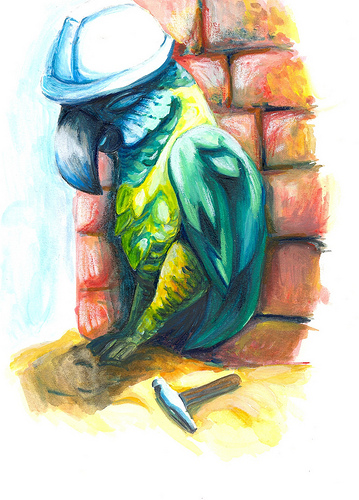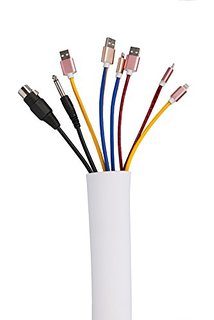Whether you’re a newbie bird owner or a seasoned professional, it’s easy to overlook possible dangers to your birds when they aren’t particularly dangerous to you. Even if your home is “pet-proofed” for your dog or cat, that doesn’t ensure it’s safe for your birds to roam just yet. Standing water, electrical cords, paints and finishes, and carpets can all turn from a regular household item into a deadly disaster for your parrot. While it isn’t possible for us to live without water and electricity, we have some helpful tips to keep your bird safe, as well as your belongings!

Do you have a parrot who is determined to be an electrician when he grows up? While having dreams and aspirations is admirable, chewing electrical cords is not! Especially when plugged into an outlet, electrical cords can electrecute or burn your bird if they’re damaged by a busy beak. There are thousands of ways to keep your cords and wires away from your parrots, but we’ll go over a few simple tips.
The easiest is keeping the cords elevated from the floor, and hidden behind furniture. Using Command hooks along the wall is a simple and non-damaging way to guide single or multiple wires along the length of a room in an organized fashion. We use the hooks in my house to elevate our cable cord, and the cords which are plugged into our power strip. We elevate the power strip itself using Command strips! The hooks and adhesive strips keep all of our electrical wires safely out of the reach of floor-walking birds, and our ever-so-curious house rabbits.
For cords or wires that aren’t able to be strung on the wall, consider covering them with PVC pipe, or plastic tubing. PVC pipe is strong, durable, and very resistant to curious beaks; pass all cords through the pipe and plug them into a power strip either behind a large piece of furniture, or elevated on the wall with Command strips. If you’d like a more in-depth guide, here’s an easy-to-follow guide from Instructables.
For cords that will be moved more often, like your laptop or smartphone  charger, consider using plastic cord concealer tubing. Typically used in office buildings to contain computer cables, the plastic tubing is a great option if you need a more flexible covering. Since there is already a split in the tube for you to push cords, cables, and wires easily inside, you can decide if you’ll mount this to the wall, or leave it to run along the floor. While the tubing may be bitten by birds, it’s unlikely they’ll be able to reach the cords before you notice that they’re up to no good.
charger, consider using plastic cord concealer tubing. Typically used in office buildings to contain computer cables, the plastic tubing is a great option if you need a more flexible covering. Since there is already a split in the tube for you to push cords, cables, and wires easily inside, you can decide if you’ll mount this to the wall, or leave it to run along the floor. While the tubing may be bitten by birds, it’s unlikely they’ll be able to reach the cords before you notice that they’re up to no good.
How do you keep your birds from chewing on electrical cords around the house? Share your tips, tricks, and photos in the comments below! Keep checking in with us as we continue to go over household dangers and simple solutions here at Bird Cages 4 Less.
5,990 total views, 3 views today
